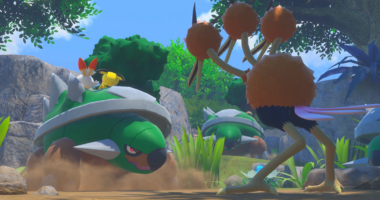URANUS is the seventh planet from the Sun in our solar system.
It might be the ‘butt’ of many a bad joke or pun but here are some mind-blowing facts about the planet.
How many moons does Uranus have?
Uranus has 27 known moons.
While the moons orbiting other planets are named from Greek or Roman mythology the ones circling Uranus are taken from characters in the works of William Shakespeare or Alexander Pope.
All of Uranus’ inner moons appear to be roughly half water ice and half rock.
The composition of the outer moons is not yet known.
The first two moons to be discovered were Titania and Oberon in 1787 by William Herschel, who discovered the planet six years earlier.
The next two moons, Ariel and Umbriel, were discovered in 1851 by William Lassell.
A century nearly went by before the next moon was found by Gerard Kuiper in 1948 and given the name Miranda.
It is the smallest of the five large spherical moons.
The flyby of the Voyager 2 space probe in January 1986 resulted in ten further inner moons being discovered.
Another satellite, called Perdita was discovered in 1999 thanks to the help of photographs taken by Voyager 2.
Since 1997 nine distant irregular moons have been discovered using ground-based telescopes.
Two more small inner moons, Cupid and Mab, were found using the Hubble Space telescope in 2003.
The last moon to have been found was Margaret in October 2003.
What colour is Uranus?
Uranus gets its blue-green colour from methane gas in the atmosphere.
Sunlight passes through the atmosphere and is reflected back out by Uranus’ cloud tops.
Methane gas absorbs the red portion of the light, resulting in a blue-green colour.
According to scientists the seventh planet in our solar system stinks of rotten eggs.
Researchers at Oxford University discovered the ice giant is surrounded by hydrogen sulphide clouds under a layer of methane.
The chemical is the same which give rotten eggs their characteristic whiff.
What is Uranus made of?
Uranus is one of two ice giants in our outer solar system, the other being Neptune.
Most of the planet’s mass, some 80 per cent or more, is made up of a hot dense fluid of “icy” materials—water, methane and ammonia—encased around a small rocky core.
Uranus is thought to have been formed around 4.5billion years ago as gravity pulled in swirling gas and dust to form the planet.
It’s thought Uranus originally formed closer to the Sun and moved further out some 4bn years ago when it became the seventh planet in our solar system.
Uranus is known as the “sideways planet” because it rotates on its side at nearly a 90-degree angle from its orbit in an east to west direction.
Venus is the only other planet with an east-west rotation.
Uranus has 13 known rings around it.
The inner rings are narrow and dark while the outer ones are brightly coloured.
Who discovered Uranus?
Uranus was discovered by the German-born British astronomer William Herschel in 1781, although he originally thought it was either a comet or a star.
It became universally accepted as a planet two years later, thanks in part to the efforts of astronomer Johann Elert Bode.
Uranus was the first planet to be found using a telescope.
Herschel’s discovery made him famous overnight and George III appointed him Court Astronomer.
He was made a Knight of the Royal Guelphic Order in 1816 and became the first president of the Royal Astronomical Society four years later.
Herschel died in 1822.
How big is Uranus?
Uranus is four times the size of Earth.
If Earth was an apple, Uranus would be the size of a basketball.
According to Nasa, Uranus has a radius of 15,759.2 miles.
From an average distance of 1.8billion miles, Uranus is 19.8 astronomical units away from the Sun.
Sunlight takes two hours and 40 minutes to travel from the Sun to the planet.
Why is it called Uranus?
Herschel had wanted to name his discovery Georgium Sidus after King George III.
Instead the scientific community accepted Bode’s suggestion to name it Uranus, the Greek god of the sky.











